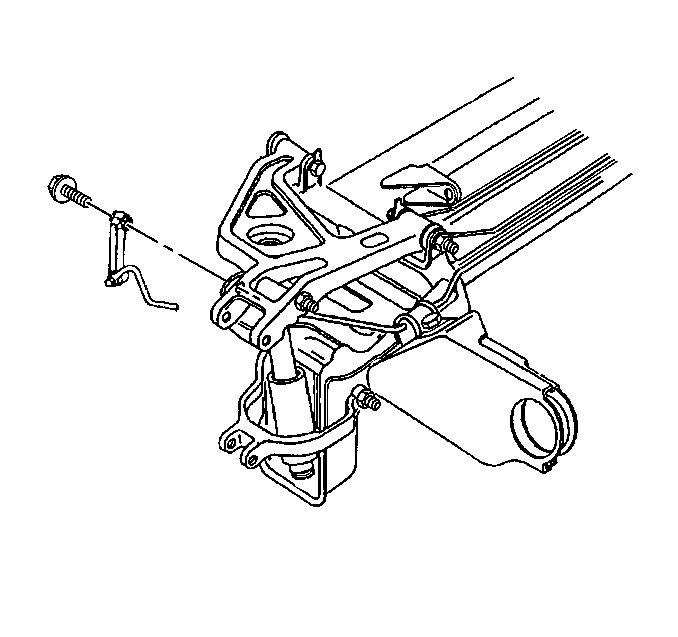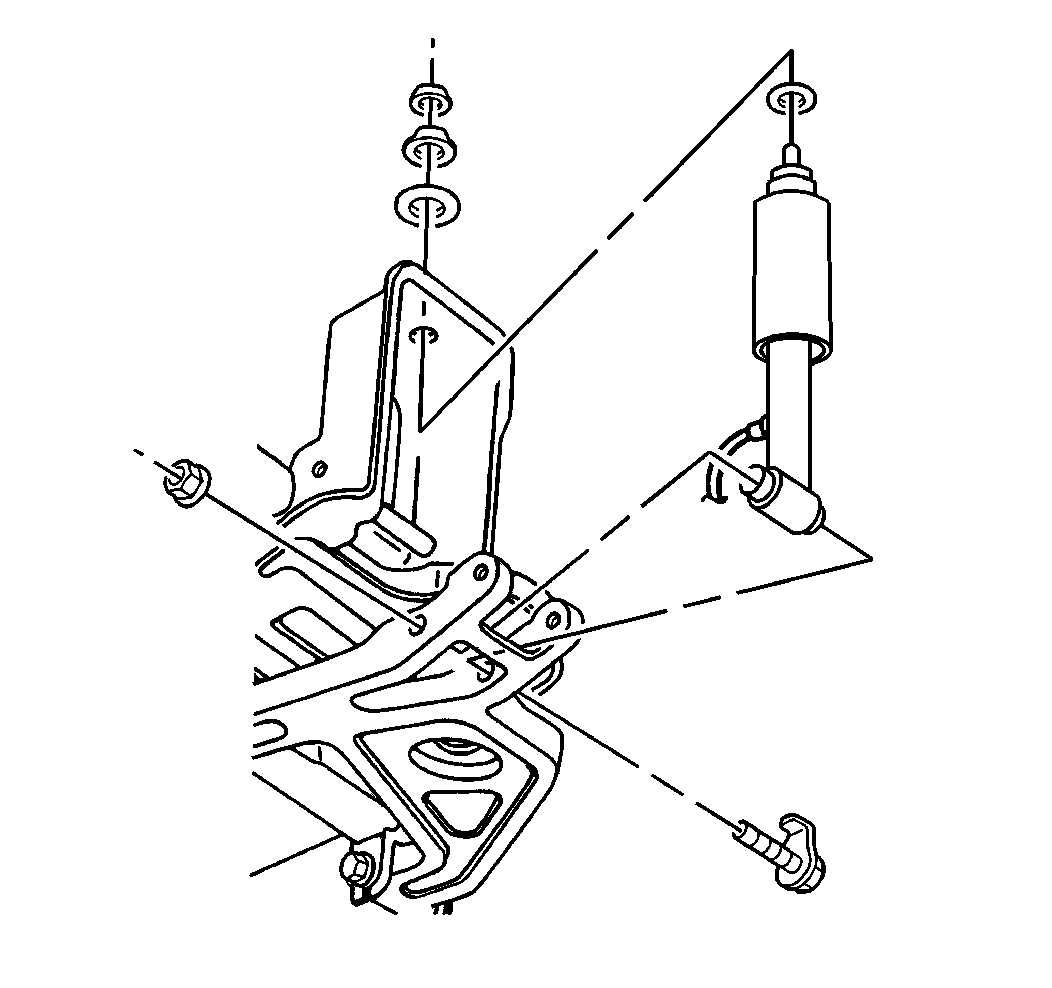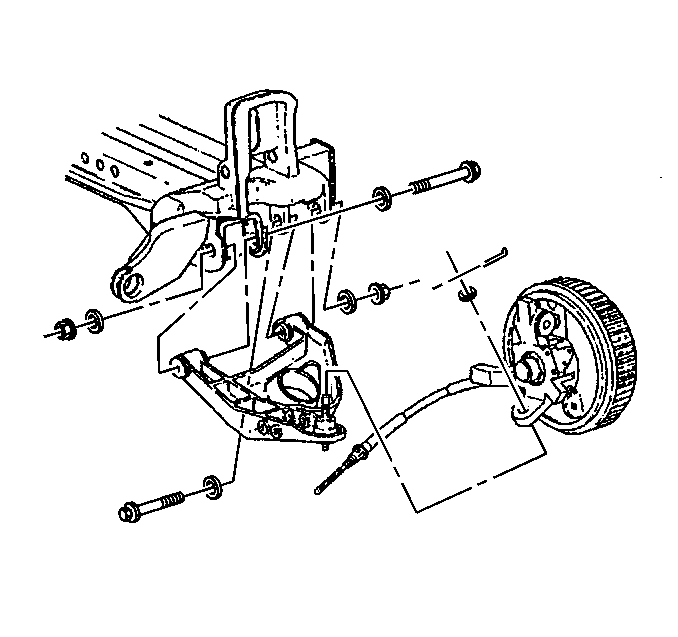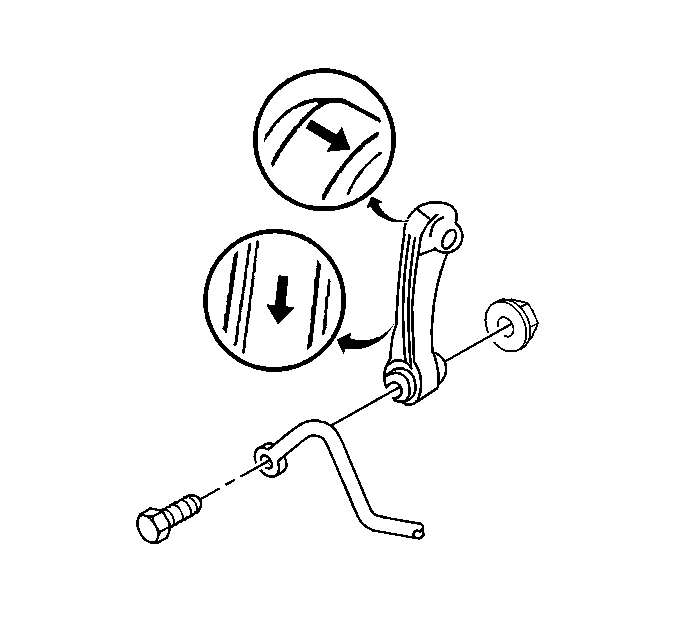Removal Procedure
- Raise the vehicle. Refer to Lifting and Jacking the Vehicle in General Information.
- Remove the wheel and tire.
- Support the outboard end of the lower control arm with a suitable jack to securely hold the control arm in position.
- Remove the stabilizer link lower attachment.
- Remove the shock absorber lower attachment.
- Disconnect the height sensor link attachment from the lower control arm.
- Separate the ball joint from the control arm. Refer to Lower Control Arm Ball Joint Replacement .
- Slowly lower the control arm down with jack until spring pressure is released.
- Pull the lower control arm downward to remove the spring.
- Remove the lower control arm inboard nuts an bolts.
- Remove the lower control arm.



Installation Procedure
- Install the lower control arm in the vehicle.
- Install the bolts and nuts.
- Raise a jack under the outboard end of the lower control arm.
- Insert the ball joint in the knuckle and attach the nut.
- Attach the shock absorber lower attachment.
- Install the stabilizer link lower attachment.
- Lower the vehicle to allow the suspension to obtain the designed trim height. The inner control arm nuts must be tightened in the designed position to reduce wind up in the bushings.
- Install the wheel and tire.

Important: To insure proper orientation of the spring, rest the spring (without insulators) on a flat surface. The spring will stand up straight when resting on its lower end, but will lean or tip when resting on its top end.
Notice: Use the correct fastener in the correct location. Replacement fasteners must be the correct part number for that application. Fasteners requiring replacement or fasteners requiring the use of thread locking compound or sealant are identified in the service procedure. Do not use paints, lubricants, or corrosion inhibitors on fasteners or fastener joint surfaces unless specified. These coatings affect fastener torque and joint clamping force and may damage the fastener. Use the correct tightening sequence and specifications when installing fasteners in order to avoid damage to parts and systems.
Tighten
Tighten the ball joint nut to 175 N·m (129 lb ft).

Tighten
Tighten the lower nut to 108 N·m (80 lb ft).

Tighten
| • | Tighten the lower control arm inner nuts to 108 N·m (80 lb ft). |
| • | Tighten the stabilizer link lower attachment to 52 N·m (38 lb ft). |
Tighten
Tighten the wheel nuts to 190 N·m (140 lb ft).
Important: The vehicle must have a rear wheel alignment performed if the inner lower control arm fasteners have been loosened. Refer to Rear Toe Adjustment in Wheel Alignment.
